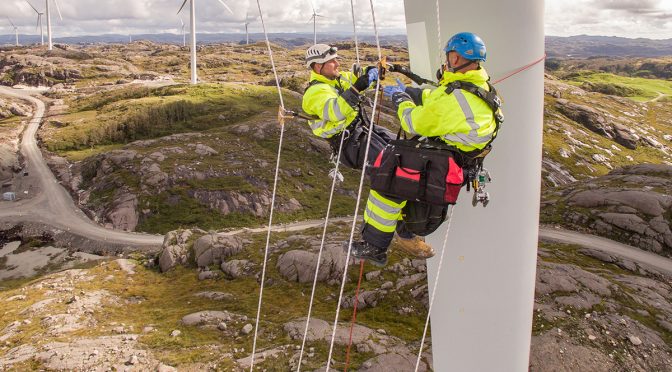New U.S. jobs report shows America’s clean energy transition will drive massive expansion of good-paying jobs in wind energy, solar, and energy storage.
America’s decarbonization has the potential to create 500,000 – 600,000 new jobs for American workers across the solar, wind, and battery storage technologies by 2030, according to the new 2021 Clean Energy Labor Supply report, prepared by BW Research Partnership and released today by the American Clean Power Association (ACP) on the first day of the CLEANPOWER 2021 Virtual Summit. The reports finds that higher-than-average pay and significant union coverage are key aspects of the clean energy employment future over the next decade.
“Clean energy jobs are quality jobs, and America is about to create a lot more of them as we work together to achieve our country’s economic and climate goals. Clean power workers make a good wage, operate in safe and healthy conditions, and are part of a dynamic and growing industry that is making America a safer, healthier, and cleaner place. One of the biggest challenges to meeting the Biden administration’s clean energy goals will be getting enough people trained and added to the workforce as quickly as possible. This is a once-in-a-generation opportunity for massive job creation, with high demand for a diversity of roles in manufacturing, construction, project development, and operations.”
– Heather Zichal, ACP CEO
According to the report, reaching 50-70 percent renewable energy generation by 2030 would create 500,000 – 600,000 jobs across the solar, wind, and battery storage industries. The manufacturing, professional service, and construction sectors would see the majority of employment growth, with manufacturing accounting for 38 percent of job-years, professional services representing 25 percent, and construction at 21 percent. In particular, wind turbine technicians, solar photovoltaic installers, semiconductor processing technicians, metal fabricators, and electricians will be in high demand to produce and install the renewable energy and storage capacities required. These jobs will be spread across the country, in red states and blue states, offering many American workers above-average wages.
There are already more than 415,000 Americans across all 50 states that proudly make up the wind, solar, and energy storage workforce. These careers are some of the fastest growing occupations in the country–wind technicians are the country’s #1 fastest growing role, and solar installers are #3.
These are quality jobs. For example, wind technicians—an occupation that does not require a four-year college degree and will experience the greatest increase in workers—made an average of $59,340 in 2020. That is five percent higher than the national average wage. Similarly, the average annual wage for electricians is $61,550, or nine percent higher than the national average. Other in-demand occupations, including supervisors of production and construction workers or mechanics, earn roughly 16 to 23 percent above the national average. Demand for electrical and civil engineers will also be high—occupations that pay 41 to 47 percent more than the national average.
Union labor is an important component of clean energy development, as unions are pivotal to preparing the high-skilled labor force needed to deploy renewable and battery storage capacity across the nation, as well as ensuring high job quality for these new positions. The 2021 Clean Energy Labor Supply report provides the most accurate and detailed picture to date of union employment in the clean energy sector.
Today, union coverage rates for solar, wind, and battery storage are just above 10 percent for each sector. By comparison, the national private-sector union coverage rate is 7.7 percent.
Many of the clean energy jobs created by 2030 will be in industries with high unionization rates. Most of the wind industry jobs created—roughly 80 to 90 percent—will be in construction or manufacturing. In the solar sector, roughly 16 percent of jobs created are in construction. For battery storage, roughly a quarter of jobs will be in manufacturing, with an additional 17 percent in construction. Construction and manufacturing have 13.4 and 9.3 percent unionization coverage rates, respectively.
There are expected to be significant gaps in the supply of wind turbine technicians, PV installers, semiconductor technicians, metal fabricators and fitters, and electricians and electrician helpers, as well as increased demand for workers across dozens of other occupations over the next decade. Filling these supply gaps will require effort across the workforce development system—community colleges, labor unions, non-profits, vocational training programs, and other providers. A clean power future will jumpstart America’s next generation workforce.


